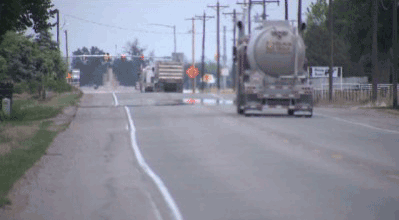Best Practices of Road User Maintenance Agreements Amongst Local Government Agencies in Ohio

Start Date: September 21, 2015
End Date: January 21, 2017
Project Completed
Researcher: Mr. Roger Green, Ohio University
To download a copy of the Executive Summary, click here.
To download a copy of the Final Report, click here.
Road User Maintenance Agreements (RUMAs) are legal agreements between local governments and for-profit organizations outlining the responsibility for road construction and repairs resulting from excessive damage to local infrastructure caused by those organizations activities. These RUMAs can also stipulate travel routes for heavy equipment haulers in order to ensure safety and help minimize damage to roadways as well as specify testing methods and rating criteria organizations are required to follow. The recent boom in the oil and gas industry in eastern Ohio has brought the use of RUMAs to the forefront. In 2012, Ohio passed Senate Bill 315 which requires well operators to enter into RUMAs or demonstrate a good-faith effort to do so. ODOT in collaboration with the Ohio Department of Natural Resources, the County Engineer's Association of Ohio, and various local transportation officials created a RUMA template to assist local governments in developing RUMAs, but is not a mandated/standard document. Many counties and townships have taken this template and modified it to meet their specific purposes. As a result, a plethora of RUMA versions are in existence within Ohio. As industries such as oil and gas, wind power, coal, and timber expand or relocate production in Ohio, the utilization of RUMAs varies. The variations in requirements, language, and execution of Ohio RUMAs can lead to confusion not only among local governments, but also with the organizations/industries attempting to enter into these agreements. The issue is further complicated as some local governments may be using RUMAs in situations where they are not necessarily app2015-ropriate. A fair amount of research has been conducted nationally on the subject of RUMAs; however, it is not necessarily easily manageable or accessible to local transportation officials. A focused synthesis study to identify the current best practices for RUMAs is needed.
The goal of this research is to conduct a synthesis of current practices related to the development and execution of RUMAs. The objective of this research is to identify current best practices and provide recommendations for RUMA development to assist Ohio's local transportation officials. The results of this research will highlight the practices that have produced the best return on investment in a clear and concise manner. This will provide inexperienced agencies with a better understanding on how to approach these agreements while more experienced agencies will have exposure to different philosophies and applications. Not only will local governments benefit from this research, but the industries/organizations that typically enter into these agreements may also benefit. This research can provide them with a better understanding of what local governments are trying to accomplish with RUMAs. A thorough review of the findings may also help industries to anticipate what may be required by the RUMAs used in specific counties, thereby helping them to estimate potential costs and efforts for the their expanded development into a particular region.